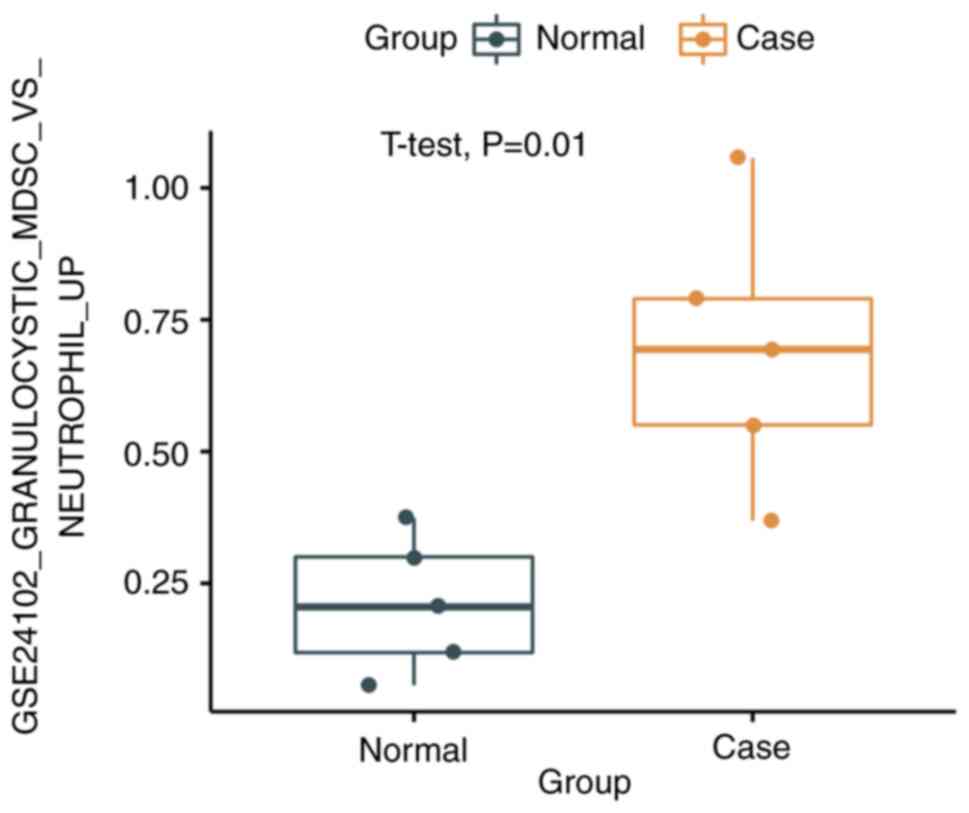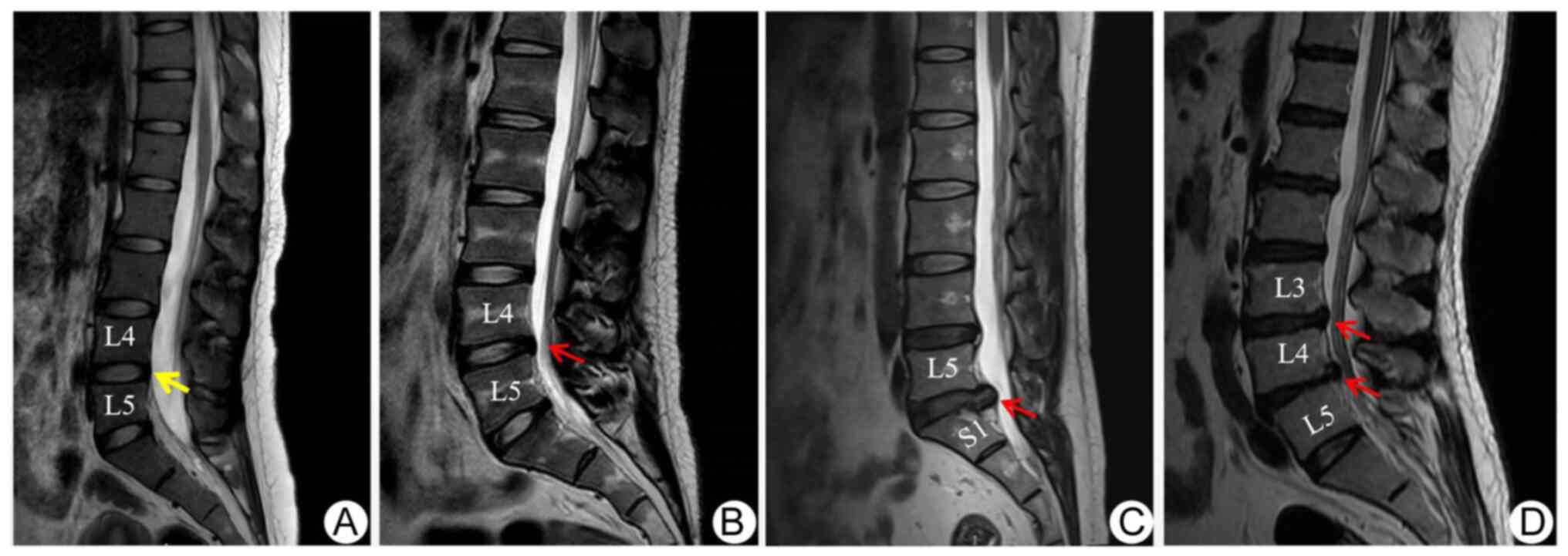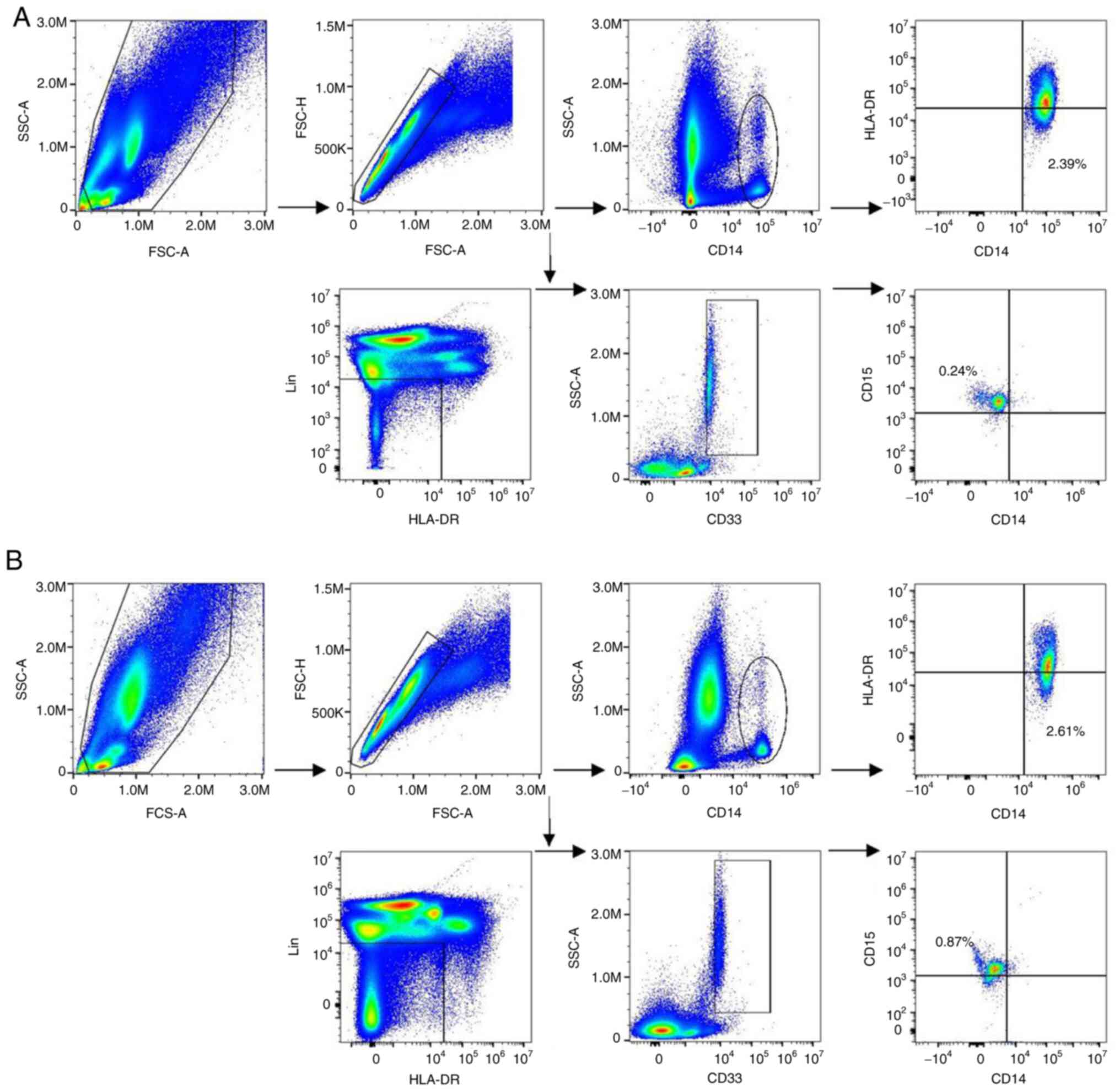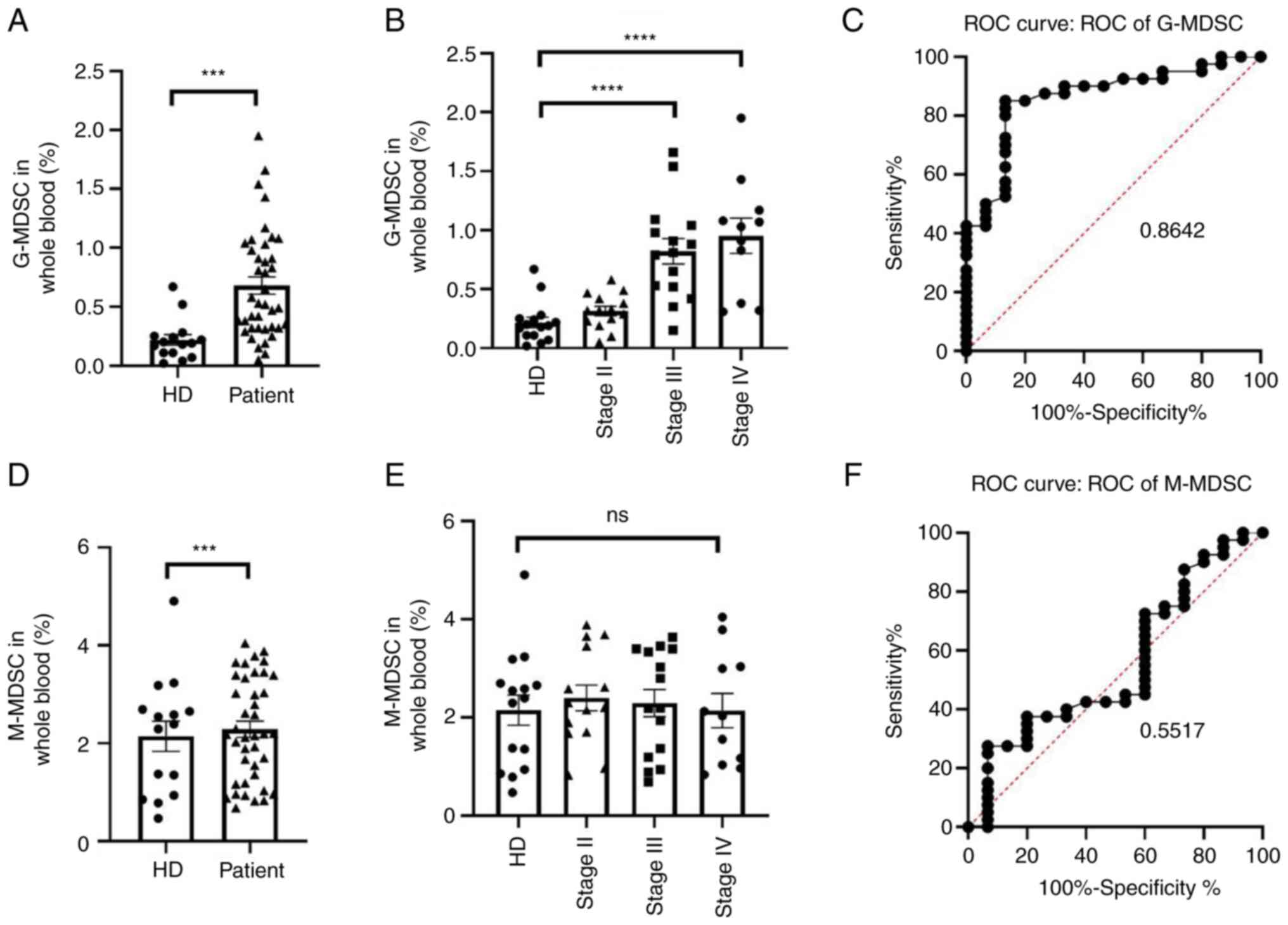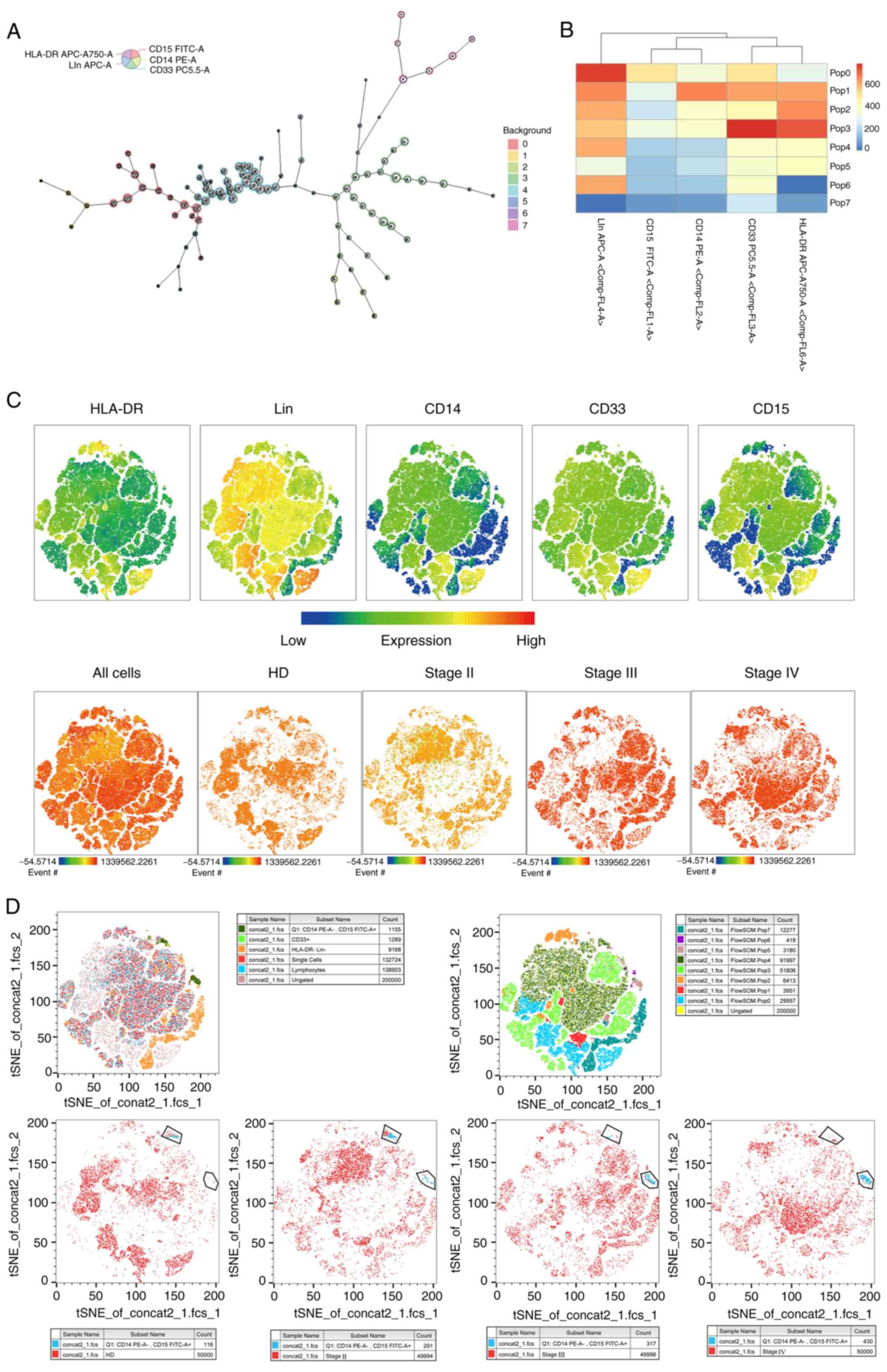|
1
|
Katz JN: Lumbar disc disorders and
low-back pain: Socioeconomic factors and consequences. J Bone Joint
Surg Am. 88:21–24. 2006.PubMed/NCBI View Article : Google Scholar
|
|
2
|
Wang P, Chen C, Zhang QH, Sun GD, Wang CA
and Li W: Retraction of lumbar disc herniation achieved by
noninvasive techniques: A case report. World J Clin Cases.
27:8082–8089. 2021.PubMed/NCBI View Article : Google Scholar
|
|
3
|
Lakstins K, Arnold L, Gunsch G, Flanigan
D, Khan S, Gadde N, Jones B, Agarwal G and Purmessur D:
Characterization of the human intervertebral disc cartilage
endplate at the molecular, cell, and tissue levels. J Orthop Res.
9:1898–1907. 2021.PubMed/NCBI View Article : Google Scholar
|
|
4
|
Roberts S, Evans H, Trivedi J and Menage
J: Histology and pathology of the human intervertebral disc. J Bone
Joint Surg Am. 88:10–14. 2006.PubMed/NCBI View Article : Google Scholar
|
|
5
|
Tsuru M, Nagata K, Ueno T, Jimi A, Irie K,
Yamada A, Nishida T and Sata M: Electron microscopic observation of
established chondrocytes derived from human intervertebral disc
hernia (KTN-1) and role of macrophages in spontaneous regression of
degenerated tissues. Spine J. 1:422–431. 2001.PubMed/NCBI View Article : Google Scholar
|
|
6
|
Gruber HE and Hanley EN Jr: Analysis of
aging and degeneration of the human intervertebral disc: Comparison
of surgical specimens with normal controls. Spine (Phila Pa 1976).
23:751–757. 1998.PubMed/NCBI View Article : Google Scholar
|
|
7
|
Liu SR, Ren D, Wu HT, Yao SQ, Song ZH,
Geng LD and Wang PC: Reparative effects of chronic intermittent
hypobaric hypoxia pre treatment on intervertebral disc degeneration
in rats. Mol Med Rep. 5(173)2022.PubMed/NCBI View Article : Google Scholar
|
|
8
|
Tapia-Pérez H: Intervertebral disc
pathologies from an immunological perspective. Rev Neurol.
46:751–757. 2008.PubMed/NCBI(In Spanish).
|
|
9
|
Varikuti S, Singh B, Volpedo G, Ahirwar
DK, Jha BK, Saljoughian N, Viana AG, Verma C, Hamza O, Halsey G, et
al: Ibrutinib treatment inhibits breast cancer progression and
metastasis by inducing conversion of myeloid-derived suppressor
cells to dendritic cells. Br J Cancer. 7:1005–1013. 2020.PubMed/NCBI View Article : Google Scholar
|
|
10
|
Rade M, Määttä JH, Freidin MB, Airaksinen
O, Karppinen J and Williams FMK: Vertebral endplate defect as
initiating factor in intervertebral disc degeneration: Strong
association between endplate defect and disc degeneration in the
general population. Spine (Phila Pa 1976). 43:412–419.
2018.PubMed/NCBI View Article : Google Scholar
|
|
11
|
Hoy D, March L, Brooks P, Blyth F, Woolf
A, Bain C, Williams G, Smith E, Vos T, Barendregt J, et al: The
global burden of low back pain: Estimates from the global burden of
disease 2010 study. Ann Rheum Dis. 73:968–974. 2014.PubMed/NCBI View Article : Google Scholar
|
|
12
|
Di Mitri D, Toso A, Chen JJ, Sarti M,
Pinton S, Jost TR, D'Antuono R, Montani E, Garcia-Escudero R,
Guccini I, et al: Tumour-infiltrating Gr-1+ myeloid cells
antagonize senescence in cancer. Nature. 515:134–137.
2014.PubMed/NCBI View Article : Google Scholar
|
|
13
|
Amodio G, Cichy J, Conde P, Matteoli G,
Moreau A, Ochando J, Oral BH, Pekarova M, Ryan EJ, Roth J, et al:
Role of myeloid regulatory cells (MRCs) in maintaining tissue
homeostasis and promoting tolerance in autoimmunity, inflammatory
disease and transplantation. Cancer Immunol Immunother. 68:661–672.
2019.PubMed/NCBI View Article : Google Scholar
|
|
14
|
Cassetta L, Baekkevold ES, Brandau S,
Bujko A, Cassatella MA, Dorhoi A, Krieg C, Lin A, Loré K, Marini O,
et al: Deciphering myeloid-derived suppressor cells: Isolation and
markers in humans, mice and non-human primates. Cancer Immunol
Immunother. 68:687–697. 2019.PubMed/NCBI View Article : Google Scholar
|
|
15
|
Kim JH, Park YS, Oh KJ and Choi HS:
Surgical treatment of severe osteoporosis including new concept of
advanced severe osteoporosis. Osteoporos Sarcopenia. 4:164–169.
2017.PubMed/NCBI View Article : Google Scholar
|
|
16
|
Kettler A and Wilke HJ: Review of existing
grading systems for cervical or lumbar disc and facet joint
degeneration. Eur Spine J. 15:705–718. 2006.PubMed/NCBI View Article : Google Scholar
|
|
17
|
Jin L, Balian G and Li XJ: Animal models
for disc degeneration-an update. Histol Histopathol. 33:543–554.
2018.PubMed/NCBI View Article : Google Scholar
|
|
18
|
Jin X, Wang J and Ge L: Identification of
immune-related biomarkers for sciatica in peripheral blood. Front
Genet. 12(781945)2021.PubMed/NCBI View Article : Google Scholar
|
|
19
|
Gertzbein SD, Tile M, Gross A and Falk R:
Autoimmunity in degenerative disc disease of the lumbar spine.
Orthop Clin North Am. 6:67–73. 1957.PubMed/NCBI
|
|
20
|
Bobechko WP and Hirsch C: Auto-immune
response to nucleus pulposus in the rabbit. J Bone Joint Surg Br.
47:574–580. 1965.PubMed/NCBI
|
|
21
|
Starkweather A, Witek-Janusek L and
Mathews HL: Neural-immune interactions: Implications for pain
management in patients with low-back pain and sciatica. Biol Res
Nurs. 6:196–206. 2005.PubMed/NCBI View Article : Google Scholar
|
|
22
|
Risbud MV and Shapiro IM: Role of
cytokines in intervertebral disc degeneration: Pain and disc
content. Nat Rev Rheumatol. 1:44–56. 2014.PubMed/NCBI View Article : Google Scholar
|
|
23
|
Wang L, He T, Liu J, Tai J, Wang B, Zhang
L and Quan Z: Revealing the immune infiltration landscape and
identifying diagnostic biomarkers for lumbar disc herniation. Front
Immunol. 12(666355)2021.PubMed/NCBI View Article : Google Scholar
|
|
24
|
Miyagi M, Uchida K, Takano S, Nakawaki M,
Sekiguchi H, Nakazawa T, Imura T, Saito W, Shirasawa E, Kawakubo A,
et al: Role of CD14-positive cells in inflammatory cytokine and
pain-related molecule expression in human degenerated
intervertebral discs. J Orthop Res. 8:1755–1762. 2021.PubMed/NCBI View Article : Google Scholar
|
|
25
|
Key JA: Intervertebral disk lesions are
the most common cause of low back pain with or without sciatica.
Ann Surg. 121:534–539. 1945.PubMed/NCBI View Article : Google Scholar
|
|
26
|
Kaliya-Perumal AK and Yoong-Leong JO:
Spontaneous total resolution of severe lumbar disc herniation.
Chonnam Med J. 56:77–78. 2020.PubMed/NCBI View Article : Google Scholar
|
|
27
|
Ma Z, Yu P, Jiang H, Li X, Qian X, Yu Z,
Zhu Y and Liu J: Conservative treatment for giant lumbar disc
herniation: Clinical study in 409 cases. Pain Physician.
5:E639–E648. 2021.PubMed/NCBI
|
|
28
|
Haro H, Kato T, Komori H, Osada M and
Shinomiya K: Vascular endothelial growth factor (VEGF)-induced
angiogenesis in herniated disc resorption. J Orthop Res. 3:409–415.
2002.PubMed/NCBI View Article : Google Scholar
|
|
29
|
Haro H, Komori H, Kato T, Hara Y, Tagawa
M, Shinomiya K and Spengler DM: Experimental studies on the effects
of recombinant human matrix metalloproteinases on herniated disc
tissues-how to facilitate the natural resorption process of
herniated discs. J Orthop Res. 2:412–419. 2005.PubMed/NCBI View Article : Google Scholar
|
|
30
|
Takada T, Nishida K, Maeno K, Kakutani K,
Yurube T, Doita M and Kurosaka M: Intervertebral disc and
macrophage interaction induces mechanical hyperalgesia and cytokine
production in a herniated disc model in rats. Arthritis Rheum.
8:2601–2610. 2012.PubMed/NCBI View Article : Google Scholar
|
|
31
|
Arai Y, Yasuma T, Shitoto K, Yamauchi Y
and Suzuki F: Immunohistological study of intervertebral disc
herniation of lumbar spine. J Orthop Sci. 3:229–231.
2000.PubMed/NCBI View Article : Google Scholar
|
|
32
|
Schrijver IT, Théroude C and Roger T:
Myeloid-derived suppressor cells in sepsis. Front Immunol.
10(327)2019.PubMed/NCBI View Article : Google Scholar
|
|
33
|
Bryk JA, Popovic PJ, Zenati MZ, Munera V,
Pribis JP and Ochoa JB: Nature of myeloid cells expressing arginase
1 in peripheral blood after trauma. J Trauma. 68:843–852.
2010.PubMed/NCBI View Article : Google Scholar
|
|
34
|
Sanchez-Pino MD, Dean MJ and Ochoa AC:
Myeloid-derived suppressor cells (MDSC): When good intentions go
awry. Cell Immunol. 362(104302)2021.PubMed/NCBI View Article : Google Scholar
|
|
35
|
Schwacha MG, Scroggins SR, Montgomery RK,
Nicholson SE and Cap AP: Burn injury is associated with an
infiltration of the wound site with myeloid-derived suppressor
cells. Cell Immunol. 338:21–26. 2019.PubMed/NCBI View Article : Google Scholar
|
|
36
|
Ochoa JB, Bernard AC, O'Brien WE, Griffen
MM, Maley ME, Rockich AK, Tsuei BJ, Boulanger BR, Kearney PA and
Morris SM Jr: Arginase I expression and activity in human
mononuclear cells after injury. Ann Surg. 233:393–399.
2001.PubMed/NCBI View Article : Google Scholar
|
|
37
|
Li X, Liu J, Xing Z, Tang J, Sun H, Zhang
X, Lv S, Chen Z, Shi M, Chen M, et al: Polymorphonuclear
myeloid-derived suppressor cells link inflammation and damage
response after trauma. J Leukoc Biol. 6:1143–1161. 2021.PubMed/NCBI View Article : Google Scholar
|
|
38
|
Fultang L, Panetti S, Ng M, Collins P,
Graef S, Rizkalla N, Booth S, Lenton R, Noyvert B, Shannon-Lowe C,
et al: MDSC targeting with Gemtuzumab ozogamicin restores T cell
immunity and immunotherapy against cancers. EBioMedicine.
47:235–246. 2019.PubMed/NCBI View Article : Google Scholar
|
|
39
|
Grützner E, Stirner R, Arenz L,
Athanasoulia AP, Schrödl K, Berking C, Bogner JR and Draenert R:
Kinetics of human myeloid-derived suppressor cells after blood
draw. J Transl Med. 14(2)2016.PubMed/NCBI View Article : Google Scholar
|
|
40
|
Zhu P, Kong F, Wu X, Dong Z, Du J, Mao Y,
Zhou H, Liu Y, Mao H, Gu Y, et al: A minimally invasive annulus
fibrosus needle puncture model of intervertebral disc degeneration
in rats. World Neurosurg. 169:e1–e8. 2023.PubMed/NCBI View Article : Google Scholar
|















